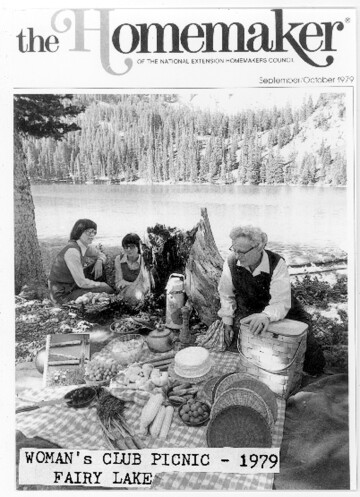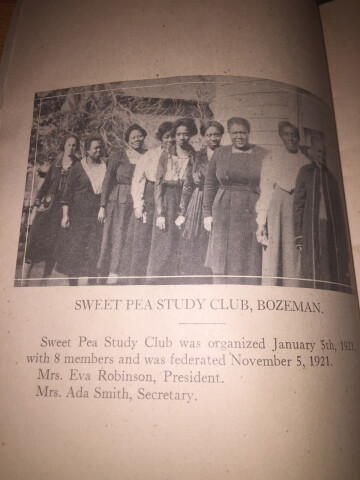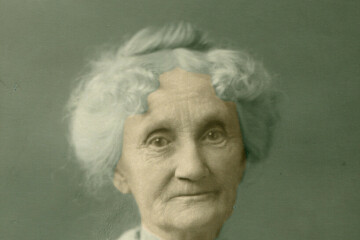Bozeman’s Women’s Clubs-Advocacy since 1894
“In Numbers There is Strength”
Advocacy, by definition is public support for or recommendation of a particular cause or policy. In today’s political climate it could be thought that the pressing issues of today, while important, are somehow new as well. If you consider 1894 Bozeman non-relevant let me introduce you to “The Bozeman State Housekeeper’s Society;” their motto was “Our Kingdom is Our Home,” and they vowed to “encourage and stimulate interest in more scientific methods of housekeeping”, as well as study history, literature, and modern methods of child care. This work was to be partly accomplished by bringing members together at stated intervals, partly by a “woman’s page” in the Stockman and Farmer, and by creating an interest in the larger questions relating to home and domestic life. The founding group of woman were comprised of many local businessmen’s wives—Mariam Skeels Cooper, Mary Long Alderson, of The Women’s Christian Temperance Union fame, Ellen Trent Story, and Nellie Koch. The first president of the association was Mrs. S. M. Emery.

The Bozeman State Housekeeper’s Society was social in nature, prominent men, as well as women, endorsed its aims and was willing to aid its work. Meetings were held on the first and third Mondays of each month from September to June, and papers were read upon such subjects as, “Sanitations,” “Physical Culture,” “Healthful Dress,” “Care of Children,” “Heredity,” “Practical Village Improvement,” and “The Development of Educational Resources.” The effort to make every member participate in the work frightened many, resulting in loss of membership, as some had been more drawn to the group for the social element.
In Phyllis Smith’s book Bozeman and The Gallatin Valley, a History, she wrote, “Bozeman women were also studying local and state government, concentrating on voting rights and a new municipal concept—community zoning. They discussed setting aside land for public parks, improving local schools, and encouraging public health.”
The History of the Woman’s Club Movement in America by Jennie Cunningham Croly, 1898, summarized well what was to happen next. “The later and more definite organization has had the effect of centralizing the interest, but it is creating a body of women whose influence will be stronger and in time wider, and will do much broader work. Undoubtedly the association will grow into a State organization, for its field is as unlimited as its possibilities, and its work of forming auxiliary societies is already begun.”
In 1910, The Bozeman Woman’s Club was organized and Federated in 1911. From the club’s handbook, “The object of the Bozeman Woman’s Club is to stimulate moral and intellectual development; to promote cordial and cultural relations among women and to contribute to the welfare of the community.” The motto for the organization was, “In numbers there is strength” and their project was “building a better community for all generations.”

Originally there were six sections or sub-divisions of the general group that concentrated on theater arts, travel, book exchange, arts and crafts, child welfare, and newcomers. In 1913, the music department made itself known when it produced its first annual musical and in succeeding years it sponsored local appearances of some of the nation’s leading artists.
The Bozeman Woman’s Club sponsored a group of junior members, through whose efforts Bozeman became known as the Sweet Pea City. During several seasons, representatives of these junior members met each Northern Pacific passenger train and presented to the travelers a bouquet of the Gallatin grown flowers. They also provided sufficient bouquets for each of the dining car tables. The courtesy of Bozeman became a national legend.
Attention of the group changed focus at the onset of World War I and members of the Bozeman Woman’s Club devoted their time and energies in Red Cross Work and regularly assembled to sew, knit and supervise the making of surgical dressings for the war effort.
In 1928, Mabel Cruickshank became president of the Bozeman Women’s Club which was now one of the most powerful groups in town. One of her concerns was the lack of any zoning commission in Bozeman; construction was helter-skelter and there was no protection for existing land use. So on Christmas 1929, Cruickshank and other club members notified the city that they expected an immediate draft to establish a zoning commission. Recognizing the prestige of the club and probably the fact that many of the city officials’ wives were members of the club, on March 7, 1930 a zoning commission and a board of adjustment were in place.
In September 1930, the Bozeman Business and Professional Women’s Club was organized at a meeting at the Hotel Baxter with 25 charter members. One of these charter members was Mabel Cruickshank, and in 1936 she was one of six running for the state legislature. She was the only woman; she did not advertise in any newspaper like her male opponents did, and she was elected as Bozeman’s first female legislator. Credit of her success was due to her no-nonsense approach to seeing what needed to be fixed, but more importantly the support she had from the Bozeman Women’s Clubs and service groups that she had been involved in for over 3 decades.
The Bozeman Business and Professional Women’s Club objectives were to elevate the standards for women; to promote the interest of business and professional women and to bring about a spirit of cooperation among them; to extend opportunities to business and professional women through education along the lines of industrial, scientific and vocational activities and to create fellowship and friendship among members.
During the Depression Years, the club followed the national trends of giving two hours weekly to unemployed women. This accounted to 10,077 hours of employment. Other club projects were selling bonds, USO service, War Relief Fund Drives, sending bundles to Europe, organizing the Blood Bank, and working for better living conditions for the aged. One of the most important projects of the club though was the annual scholarship to a Gallatin County female student at Montana State College. The first of these scholarships was for $50 given in 1937.
While the efforts of these primarily urban Bozeman women’s groups were working on causes that were forefront in their minds and that of the community, other women’s groups were forming to provide social outlets and to meet their civic needs. On January 5, 1921, The Bozeman Sweet Pea Study Club, with eight members, organized to join the Montana Federation of Colored Women’s Club. The Bozeman Club joined nine other women’s clubs from throughout the state to assemble in Butte on August 3, 1921.

In addition to offering social activities for African-American women, the local clubs and the state federation supported the Claudia Bivens Scholarship Fund to help African-American high school students attend college, lobbied for civil rights legislation in the state legislature, and worked through a variety of programs to improve racial relations at the state and local level. After World War II, membership in the state’s local clubs dwindled as the African-American population in the state dropped. During the 1920s and 1930s, as many as fifteen local chapters were active in Montana, but by the 1970s only four clubs remained active and the state federation voted to disband on June 17, 1972.
Rural women’s groups were active as well both socially and civically. In 1924, The Middle Creek Woman’s Club was founded by farm wives who lived west of Bozeman, often in great isolation. Farms could be four to five miles apart and most farm wives did not have cars. The club’s original name was Idle-while, because they were idle for a while, but not long. Two days a month the ladies mostly from Gooch Hill, Blackwood and Chapman Roads, would gather at someone’s home, cook a big meal, sew a quilt and socialize. They also helped pour cement for a basement to rebuild a neighbor’s home after a fire and raised money to buy folding chairs for the Middle Creek School. They held picnics, traded cookie recipes, sang patriotic songs, made quilts for a home for unwed mothers and bought flowers for neighbors’ funerals.
Club member, Mildred Marshall, wrote in the late 1940s, “One thing that holds a club together is mutual understanding, a desire to help each other and our community. So put your shoulder to the wheel and do your share, whether it be large or small, and you will find your life the richer and fuller.”
A great lesson can be learned from the history of these women’s groups. There is strength in numbers and mutual understanding and a desire to help each other and our community is what will hold us together.




